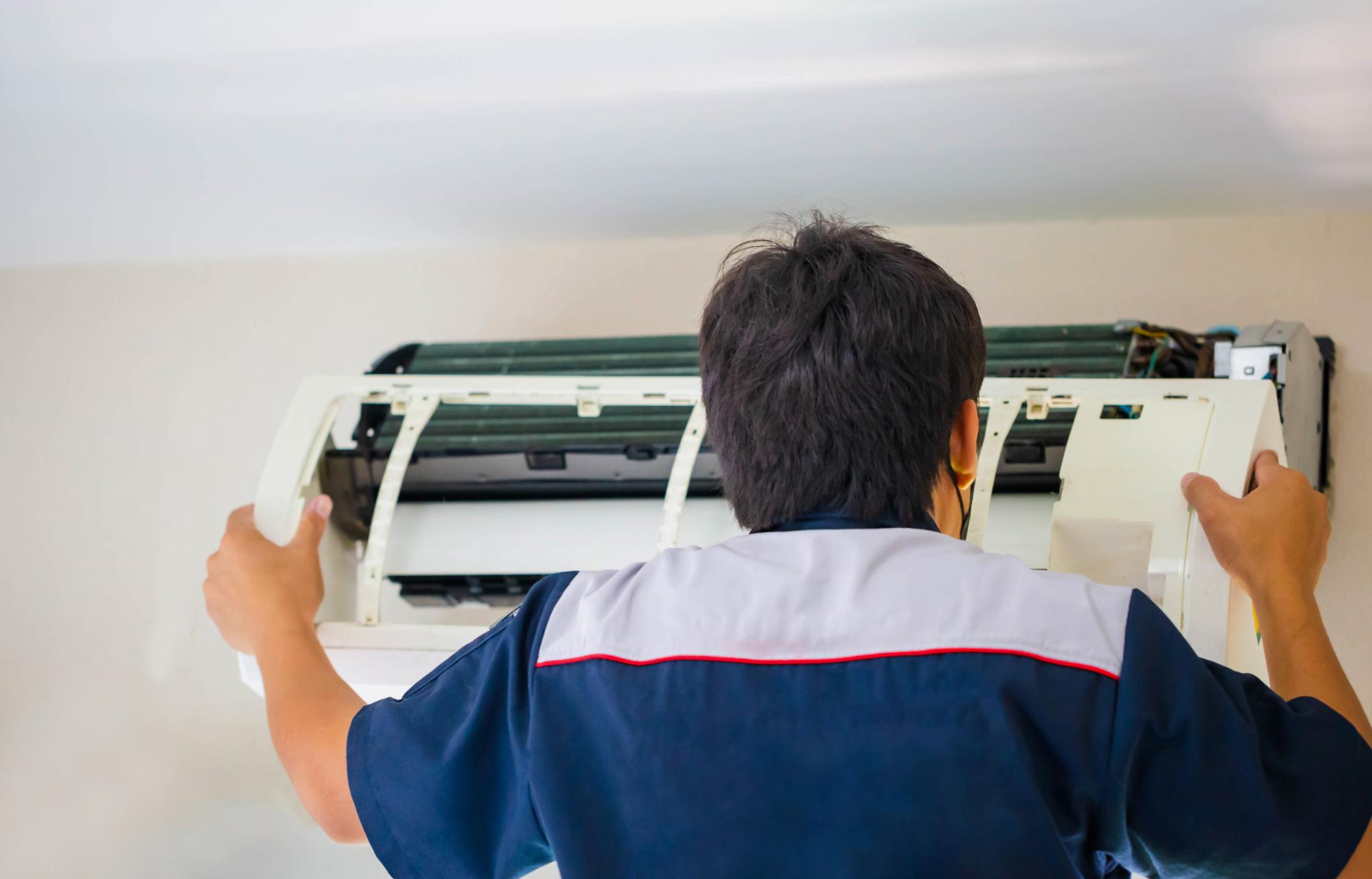For homeowners in Woodstock, summer can put a big demand on your air conditioning system. When your AC starts underperforming or breaking down more often, you’re left wondering if another repair is worth the trouble or if it’s time to start fresh with a new unit. This decision can feel like a tough call, especially if previous repairs have prolonged your system’s life. But as your AC ages, repairs may no longer be the most practical or cost-effective solution.
The key is knowing when it makes more sense to replace the unit rather than continue spending on repairs. While no one likes the idea of making a big investment, holding onto an inefficient or failing system could lead to a steady stream of repair costs and rising power bills. A little clarity on what signs to look for can help you make a smarter move when the time comes.
Understanding AC Replacement vs. Repair
Air conditioners go through a lot during the hottest months, and even with routine maintenance, parts will wear out over time. When something goes wrong, most people naturally lean toward fixing it first, especially if the unit still runs. That logic works when repairs are minor, the unit still performs well, or the system is relatively new. But if problems keep coming back or comfort levels drop, a new AC might be the more reliable option.
It is helpful to think about replacement versus repair as a balance between short-term fixes and long-term value. If your system has started failing more than once a season, those repair costs add up quickly. You do not want to keep sinking money into an aging unit that will soon need to be replaced anyway. And it is not just about how often it breaks, it is also about performance. Struggling airflow, uneven cooling, and excessive cycling on and off could hint at problems beyond a simple fix.
Many homeowners put off replacing their AC, hoping to avoid the upfront expense. But doing so can backfire. You might end up paying more through recurring repairs and elevated energy bills, especially if the system no longer runs efficiently. A technician can often inspect your unit and help clarify your options, but it is still useful to understand the warning signs yourself before reaching that point.
Signs It’s Time For AC Replacement
If you’re thinking about how long you can put off replacing your AC, look at how well it’s running and at what cost. Here are a few signs that point to a system that may be ready for replacement:
1. Repairs are happening more often: Needing one repair is not a big deal. But if you have had several technician visits in the past year or two, your AC could be nearing the end of its lifespan.
2. Your energy bills are climbing: If your cooling bills keep increasing with no change in your usage, your system may be losing efficiency.
3. The system is more than 10 to 15 years old: Most AC systems last around this long. Once yours passes that window, breakdowns and efficiency issues tend to increase.
4. Airflow feels weak or uneven: If your home feels humid in some rooms and hot in others, the AC might not be able to push air through as it should.
5. Comfort never seems right: An AC that can’t maintain a consistent temperature or struggles to respond on hot days might be too worn out to fix effectively.
One Woodstock homeowner found themselves calling for repairs twice each summer for years. At first, it was easy to justify a wiring fix here, a fan motor there. But eventually, the costs piled up, and cooled air was not reaching half the house. Replacing the system brought not just stronger airflow but also a noticeable drop in monthly cooling costs.
Watching for these signs early on can help you plan and budget for replacement before the unit fully fails, keeping your home cool when you need it most without added stress.
Benefits of Replacing Your AC System
Choosing to replace your old AC system rather than continue with frequent repairs can bring noticeable changes to your home’s comfort and running costs. The most immediate benefit homeowners in Woodstock often notice is improved energy efficiency. Newer AC units are built to meet higher efficiency standards, which means they use less energy to keep your house cool. That can lead to more predictable power bills and reduced strain on your home’s electrical system.
Another plus is the boost in home comfort. A new system can do a better job maintaining even temperatures throughout your home, even during long heat waves. New models also come with upgrades like variable-speed motors, smart thermostat compatibility, and improved humidity controls. These features let your system adjust more evenly to your home’s cooling needs, so you’re not constantly adjusting settings or dealing with warm spots.
Noise is another concern with older units. As AC systems age, they can get louder due to worn-out fans and loose components. A quieter system can make a big difference, especially for light sleepers or homes with bedrooms close to the outdoor unit. Beyond everyday comfort, a newer AC also brings peace of mind. Fewer breakdowns mean fewer disruptions, especially during hot summer weekends.
Replacing your AC can also reduce indoor allergens and improve air quality. Newer units often include better filtration technology. If someone in your household deals with allergies or asthma, a newer system might help reduce irritants in the air. While the upfront cost might seem high, long-term gains from better comfort, lower energy use, and fewer service calls start to add up quickly.
Cost Considerations Before Replacing Your AC
Investing in a new AC system is a big decision, so cost will naturally play a role. The initial purchase and installation costs can vary, depending on your home's layout, the size of the unit, upgrades, and other installation factors. But what often gets overlooked is how much you might save in the long term. A more efficient system can help lower utility bills and avoid repeat repair costs that add up over the years.
It is smart to look at a few things when weighing costs:
1. Past and expected repair costs over the next few years
2. Energy bills and how often they increase
3. The age and efficiency of your current system
4. How often you are adjusting the thermostat for comfort
5. Warranty coverage and how much longer it lasts on your current unit
Financing options may help if a full payment upfront is not realistic. Conservation rebates or seasonal incentives might also be available at the time you are making your decision. Doing a simple breakdown comparing annual energy use and average repair costs is often all it takes for the numbers to point toward replacement.
Think of it like this: spending money to keep repairing an outdated AC can feel like patching a flat tire every week instead of replacing it. You are spending money, but your comfort and peace of mind stay stuck in the same place.
Choosing The Right System For Your Home In Woodstock
Once you have decided to move forward with AC replacement, it is important to get a system that fits your home's size and needs. An AC that is too small will not keep up during peak summer heat. One that is too large may cool the home quickly but will not remove humidity correctly, which can leave things feeling clammy and uncomfortable.
Start with a full assessment of your home’s layout. This includes square footage, ceiling height, insulation quality, window size, and even how many people live in the house. All of these factors matter when calculating load requirements and overall airflow.
Energy efficiency is another key point. Look at SEER (Seasonal Energy Efficiency Ratio) ratings. The higher the SEER, the more efficient the unit. Even though high-efficiency units can cost more upfront, they tend to lower your energy use over time. You may also want to consider extra features like programmable thermostats, two-stage compressors, or zoned cooling for larger homes.
No matter which system you choose, proper installation is critical. A top-tier AC unit will not perform well if it is installed incorrectly. Bad duct connections, airflow miscalculations, or improper refrigerant charging can reduce performance and lead to new problems. Working with our qualified professionals ensures your new system delivers consistent results.
Maintaining Year-Round Comfort After Replacement
Once your new AC is installed, keeping it running smoothly means staying on top of regular maintenance. Having a maintenance schedule prevents small issues from becoming bigger ones and helps your system work as efficiently as possible. Tasks like cleaning the coils, changing filters, clearing the drain line, and inspecting electrical components all go a long way.
Even basic care can extend the life of your system and help avoid the same problems that forced the old one out. With proper maintenance, most modern AC systems continue to deliver solid performance well past 10 years. It is a simple routine, but it makes a noticeable difference.
Of course, every home and situation is different. If you are dealing with an old, inefficient AC in Woodstock and are unsure what to do next, now is a good time to reassess whether repair or replacement makes more sense. Taking the time to understand your system, your cooling needs, and your home’s layout puts you in a better position to make a cost-effective decision that works long term.
For homeowners in Woodstock, upgrading your cooling system can offer lasting comfort while reducing repair costs. Learn more about AC replacement in Woodstock and find a reliable solution to improve your home's efficiency. Self Heating & Cooling is ready to support you as you make this important decision; for a quick estimate or to book a service visit, please contact us today.











